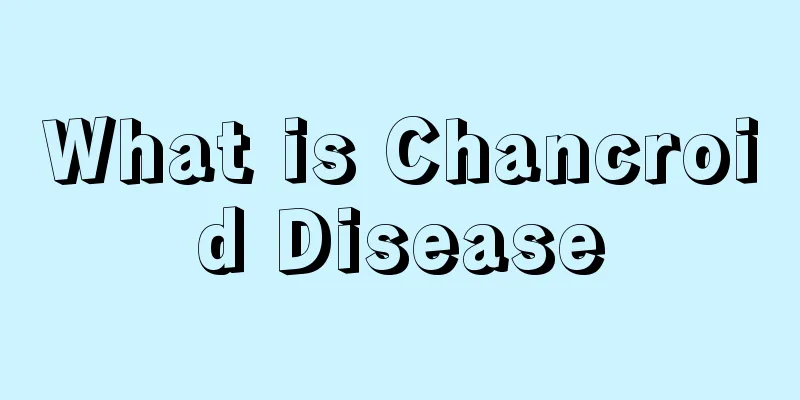What are the treatments for liver cancer? The most comprehensive and effective treatments for liver cancer

|
Most people get nervous when they hear the word cancer, thinking that liver cancer is an incurable disease. In fact, there is no need to panic. At present, my country has achieved certain results in the prevention and control of liver cancer. When diagnosed with liver cancer, the first thing to do is to correct your mentality and treat it correctly and objectively. So what are the treatments for liver cancer? Let's take a look. Surgery It is the first choice of treatment for liver cancer, which can achieve the purpose of cure by completely removing the tumor tissue. Modern liver surgery technology is becoming more and more advanced, and the size of the tumor is not the key factor restricting the operation. Whether it can be removed and the efficacy of the resection are not only related to the size and number of the tumor, but also closely related to liver function, degree of liver cirrhosis, tumor location, tumor boundary, the presence or absence of complete capsule and venous tumor thrombus. Patients who undergo surgical resection are generally required to have good general condition, that is, no organic lesions of important organs such as the heart, lungs, and kidneys, normal or near-normal liver function, and specific objective liver function reserve assessment indicators, such as jaundice level, albumin level, indocyanine green retention rate, etc. At the same time, there are no extrahepatic tumor metastases, and the tumor location is limited, rather than multiple or diffuse distribution. The one-year survival rate after surgical resection of early liver cancer is more than 80%, and the five-year survival rate is more than 50%. If combined with comprehensive treatment after surgery, better results can be achieved. In addition to liver resection, surgical treatment can also choose liver transplantation, especially for patients with small liver cancer with cirrhosis and liver decompensation, liver transplantation is the best choice. At present, about 4,000 liver transplants are performed in my country each year, of which the proportion of liver cancer patients is as high as 40%. There are many standards for the indications of liver transplantation for liver cancer, mainly focusing on the size, number, vascular invasion and lymph node metastasis of the tumor. In general, these standards are relatively consistent in terms of the requirements for no large blood vessel invasion, lymph node metastasis and extrahepatic metastasis, but the requirements for the size and number of tumors are not the same. Compared with the international liver transplantation standards for liver cancer, my country's standards have expanded the scope of indications for liver transplantation for liver cancer. Although liver cancer patients who exceed the standards may eventually relapse and metastasize after receiving liver transplantation, their quality of life and survival time are significantly better than other treatment methods. Therefore, a comprehensive judgment should be made based on the demand ratio of donors and recipients to select indications. Other treatments It includes radiofrequency ablation, microwave ablation, high-intensity focused ultrasound, intra-arterial chemoembolization, alcohol injection, cryotherapy, radiotherapy, molecular targeted therapy, immunotherapy and traditional Chinese medicine treatment, etc., and is mainly used for patients who cannot undergo surgical treatment for various reasons. Among them, the principle of radiofrequency ablation or microwave ablation for liver cancer is to use the thermal effect of microwaves or radio frequencies to heat the liver tissue through the oscillation of polar molecules in the tissue, especially water molecules, thereby causing thermal coagulation in the target area. In layman's terms, it burns the tumor to death, which can achieve a radical cure comparable to liver cancer resection and liver transplantation. It is suitable for patients with smaller single liver cancers that are far away from important blood vessels, liver cancer recurrence after surgical resection, or liver cancer patients with poor liver function reserve who cannot tolerate surgical resection. Hepatic artery interventional chemoembolization is to reach the hepatic artery through arterial catheterization and inject embolic agents or anticancer drugs. It is often used for patients with advanced liver cancer who cannot undergo surgery to control the disease and prolong survival. For those who are not suitable for hepatic artery interventional treatment and some patients after palliative surgery, combined or sequential chemotherapy can be used, but liver cancer is not well responsive to chemotherapy and often does not achieve good therapeutic effects. |
Recommend
Experts remind that prevention of liver cancer should start from the cause
Everyone has heard of liver cancer. Do you know t...
Reasons for constant coughing and phlegm
When it comes to coughing, the first thing people...
The efficacy and function of Artemisia argyi
Wild mugwort is common in most parts of my countr...
How to dye hair with Impatiens_How to dye hair with Impatiens What are the methods of dyeing hair with Impatiens?
In daily life, Impatiens is also called henna. It...
The use of liquid paraffin_The role of liquid paraffin
We often use paraffin in our daily life. Liquid p...
What are the benefits of washing your face with watermelon rind?
In the hot summer, watermelon is a fruit that is ...
Symptoms of psoas muscle inflammation
Exercise can make the body healthier, but the amo...
What medicine should I take for allergic cough
Allergic cough is a very common disease. Especial...
Three major mechanisms of cellulose in preventing colon cancer
Since the 1970s, there have been more and more re...
What should I do if I have colon cancer? How long can I live with colon cancer?
Colon cancer is a malignant tumor that occurs in ...
What foods can you eat regularly to improve your immunity?
Everyone knows that only when the human body has ...
How much does cryosurgery for kidney cancer cost
Cryotherapy for renal cancer. Most people don'...
Can hemorrhoids be inherited?
Medical investigations have found that there is n...
How does Traditional Chinese Medicine treat lung cancer? Traditional Chinese Medicine has three principles for treating lung cancer
The impact of lung cancer is very huge. As the di...
The importance of knowing yourself
In our real life, everyone has shortcomings and a...









